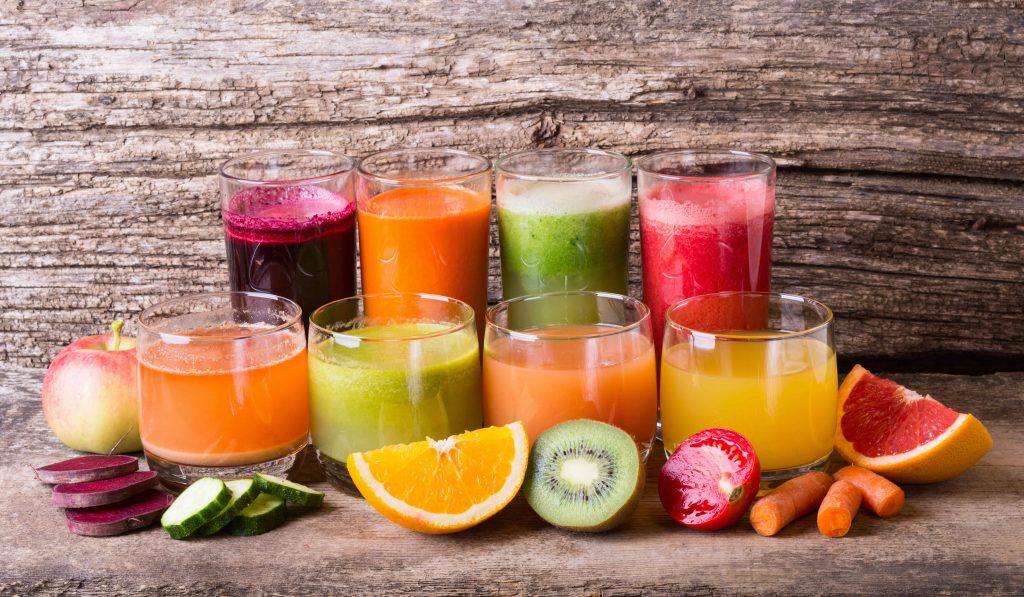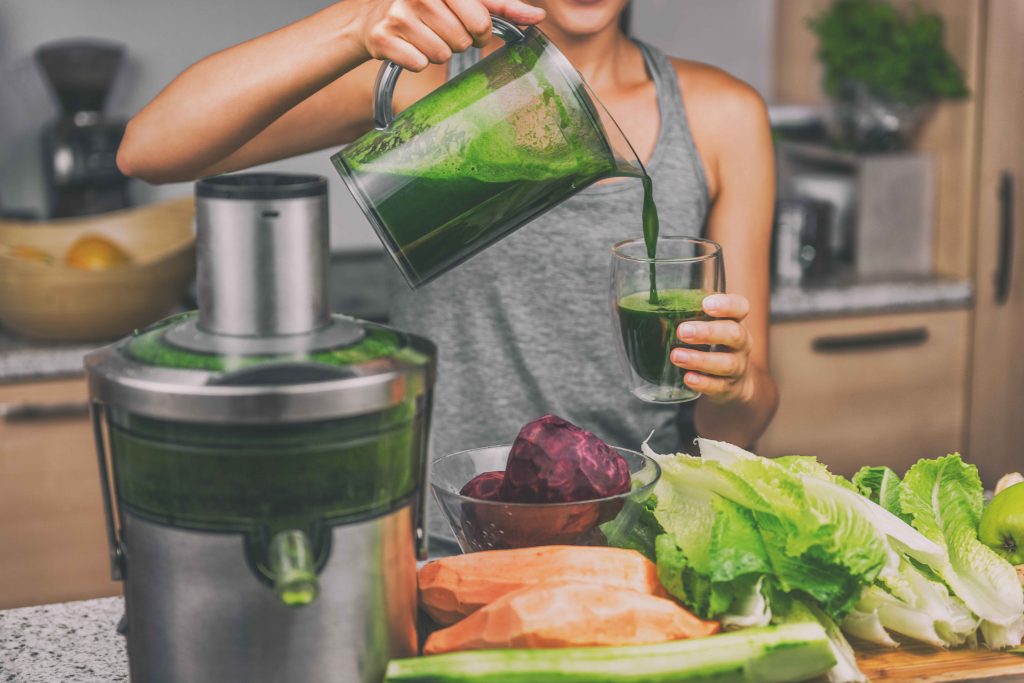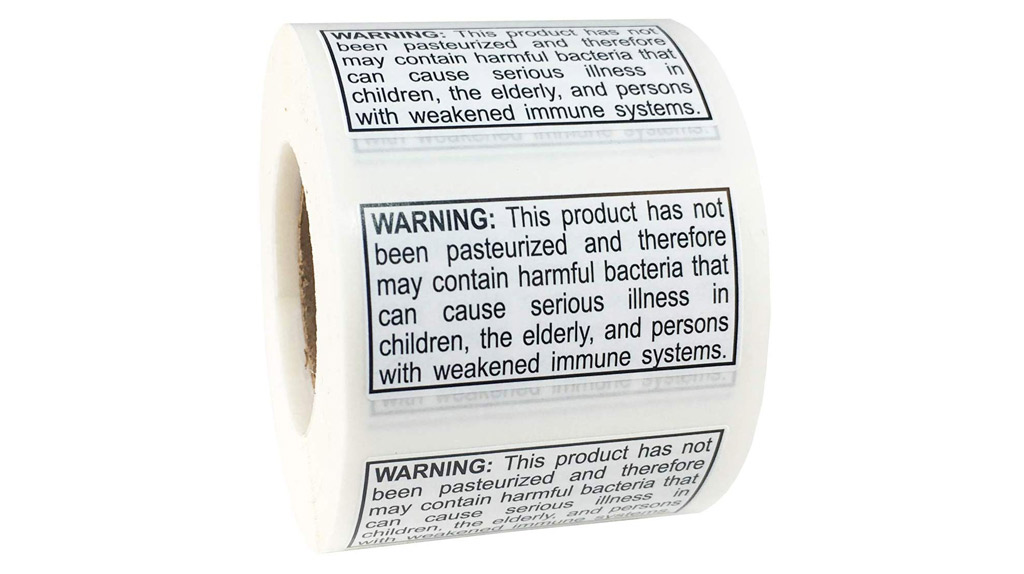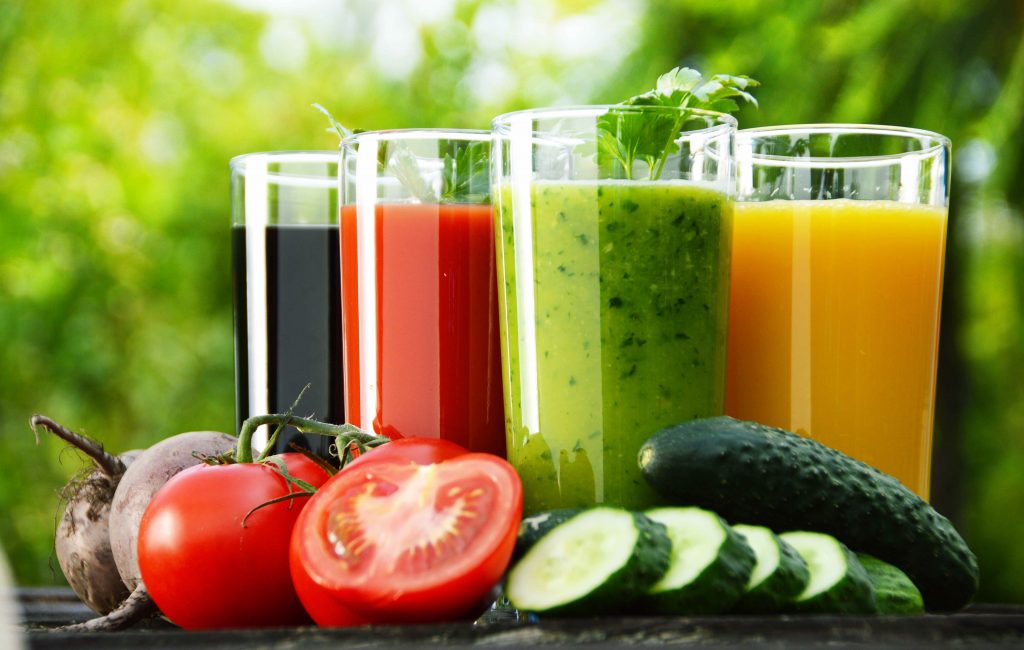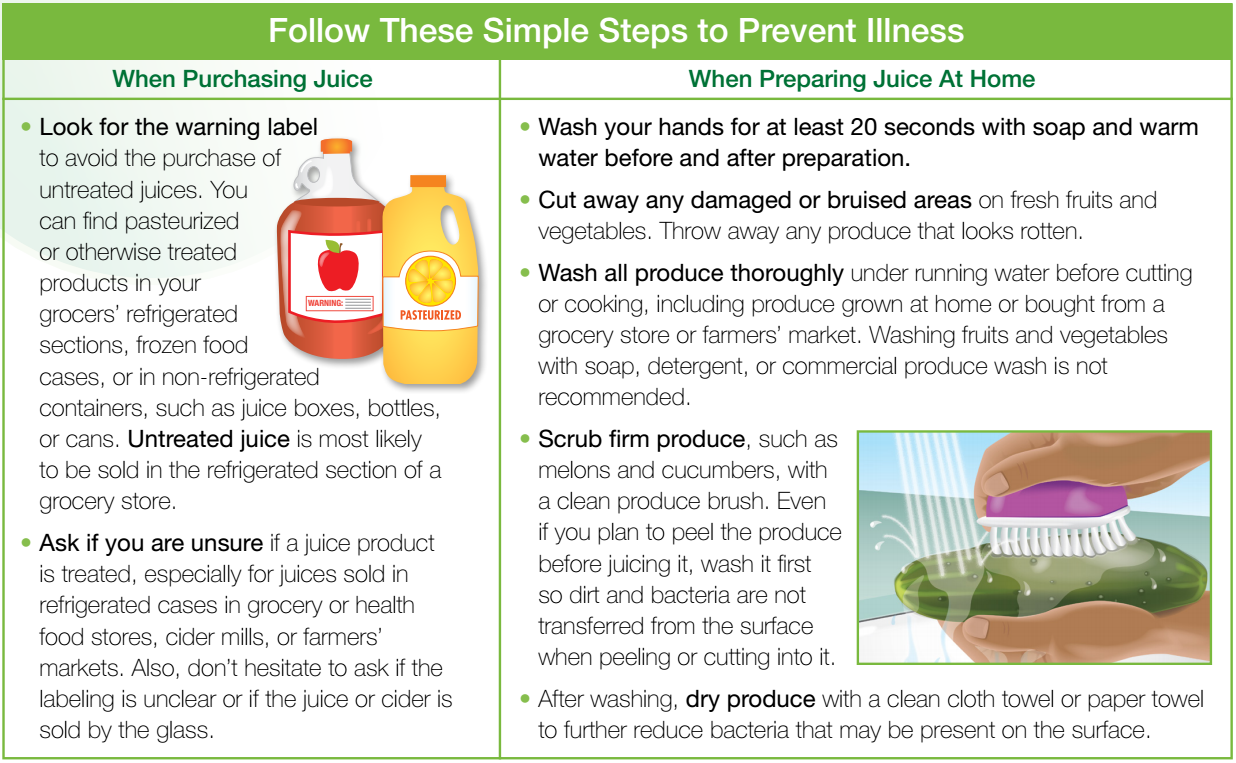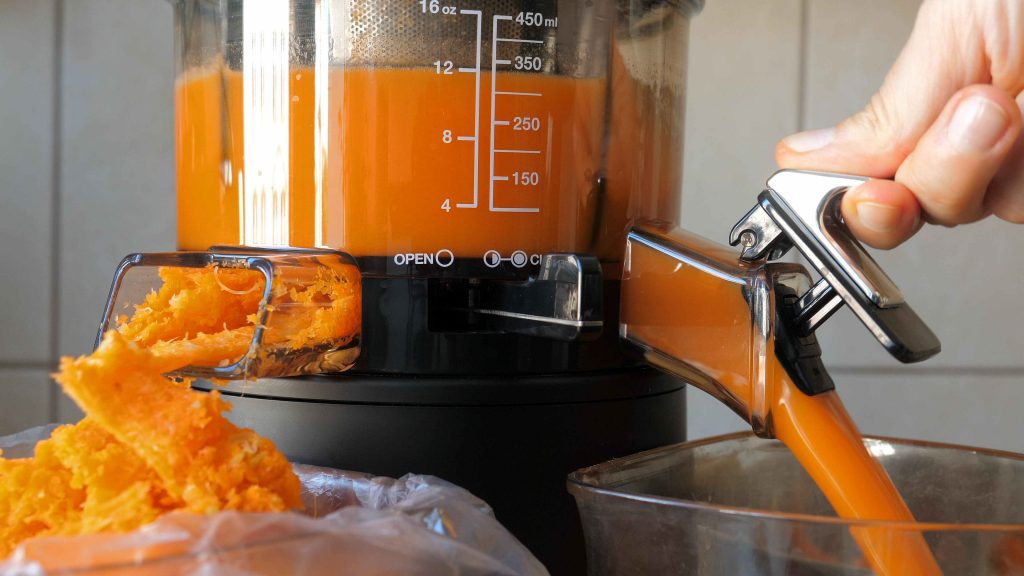With the new year, many people are interested in cleansing their bodies of toxins brought on by bad lifestyle habits. A juice detox is the perfect answer for a fresh start; it can supercharge your cells with nutrition and re-energize your body.
A juice cleanse is a tasty and relaxing way for your body to detoxify. Subsisting on good quality, organic vegetables and fruit juice that is not pasteurized provides your cells with wholesome raw nutrients. By consuming a juice detox diet your body has an opportunity to reboot and flush unwanted toxins.
But, did you know that when fruits and vegetables are fresh-squeezed or used raw, bacteria from the produce can end up in your juice – unless handled properly?
- Learn about foodborne pathogens, cross contamination, cold and hot food safety, and best practices to prevent foodborne illness.
- Food Manager ANSI Certification: $99.00 - Valid in all States
- Food Handler Training: Only $7.00!
- 10% OFF: Enter Promo Code "train10off" at Checkout
Food Safety Preparation of Produce for Juicers
As beneficial as juice may be, it is as equally important to make sure that the juice is safe to drink — i.e., so that it doesn’t contain harmful foodborne bacteria such as Listeria, E. coli, and Salmonella.
The FDA warns that when fruits and vegetables are fresh-squeezed or used raw, bacteria on the outside of the produce can end up in your juice or cider. With that in mind, use these tips when making raw juice at home:
- Wash your hands for at least 20 seconds with soap and warm water before and after preparation.
- Wash all produce thoroughly under running water before cutting or cooking, including produce grown at home or bought from a grocery store or farmers market. Washing fruits and vegetables with soap, detergent, or commercial produce wash is not recommended.
- Scrub firm produce, such as melons and cucumbers, with a clean produce brush under running water. Even if you plan to peel the produce before juicing it, wash it under running water first so dirt and bacteria are not transferred from the surface when peeling or cutting into it.
- After washing, dry produce with a clean cloth towel or paper towel to further reduce bacteria that may be present on the surface.
- Cut away any damaged or bruised areas on fresh fruits and vegetables. Throw away any produce that looks rotten.
Pasteurized Juice Warning Labels
Most of the juice sold in the U.S. is pasteurized (heat-treated) to kill harmful bacteria. Juice products may also be treated by non-heat processes for the same purpose.
However, some grocery stores, health food stores, cider mills, farmers’ markets, and juice bars sell packaged juice that was made on site that has not been pasteurized or otherwise treated to ensure its safety. Moreover, the FDA does not require warning labels for juice or cider that is sold by the glass – for example, at apple orchards, farmers’ markets, roadside stands, juice bars, and some restaurants.
These untreated products should be kept under refrigeration and are required to carry the following warning on the label:
“WARNING: This product has not been pasteurized and therefore may contain harmful bacteria that can cause serious illness in children, the elderly, and persons with weakened immune systems.”
FDA Guide on Juice Safety
The U.S. Food and Drug Administration (FDA) has put together a new guide to help consumers make informed choices about raw juice products. Fresh juices sold at produce stands or health food stores are not always as healthy and beneficial as they may seem.
This brochure is meant to educate consumers on food safety issues related to buying, making and consuming raw juices. This FDA guide can help with deciphering when raw juice products are safe to consume or not.
Follow Juice Safety Tips to Prevent Illness
When Purchasing Juice
- Look for the warning label to avoid the purchase of untreated juices. You can find pasteurized or otherwise treated products in your grocers’ refrigerated sections, frozen food cases, or in non-refrigerated containers, such as juice boxes, bottles, or cans. Untreated juice is most likely to be sold in the refrigerated section of a grocery store.
- Ask if you are unsure if a juice product is treated, especially for juices sold in refrigerated cases in grocery or health food stores, cider mills, or farmers’ markets. Also, don’t hesitate to ask if the labeling is unclear or if the juice or cider is sold by the glass.
Know the Symptoms of Foodborne Illness
Consuming dangerous foodborne bacteria will usually cause illness within 1 to 3 days of eating the contaminated food. However, sickness can also occur within 20 minutes or up to 6 weeks later. Although most people will recover from a foodborne illness within a short period of time, some can develop chronic, severe, or even life-threatening health problems.
Foodborne illness can sometimes be confused with other illnesses that have similar symptoms. The symptoms of foodborne illness can include:
- Vomiting, diarrhea, and abdominal pain.
- Flu-like symptoms, such as fever, headache, and body aches.
Take Action
If you think that you or a family member has a foodborne illness, contact your healthcare provider immediately.
Summary
A juice cleanse is a tasty way to detoxify your body. But, as beneficial as raw juice may be, the raw produce can contain harmful foodborne bacteria such as E. coli, Salmonella, or Listeria. There are some important food safety principles and procedures you should follow when making raw juice to prevent food illness.

